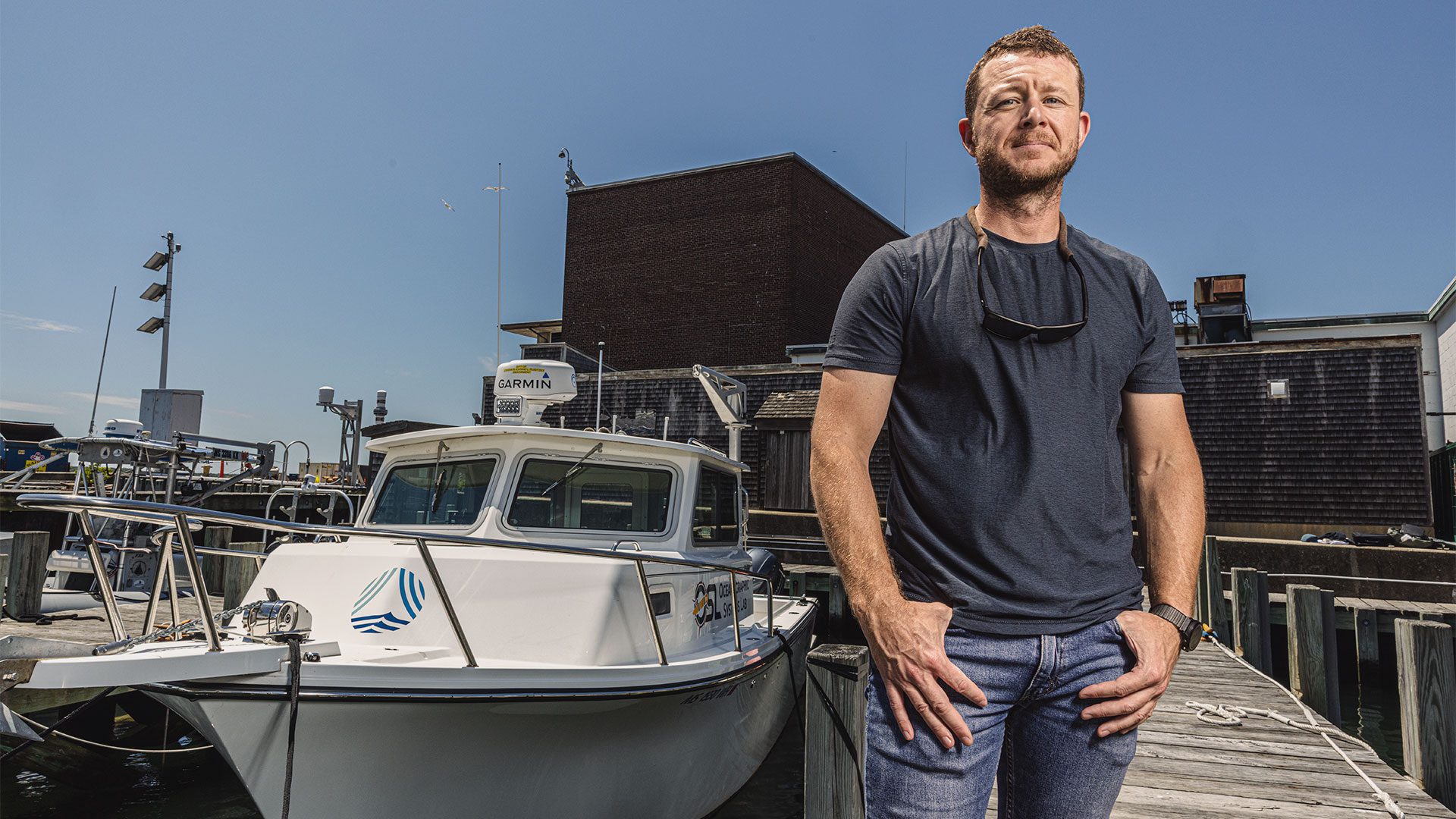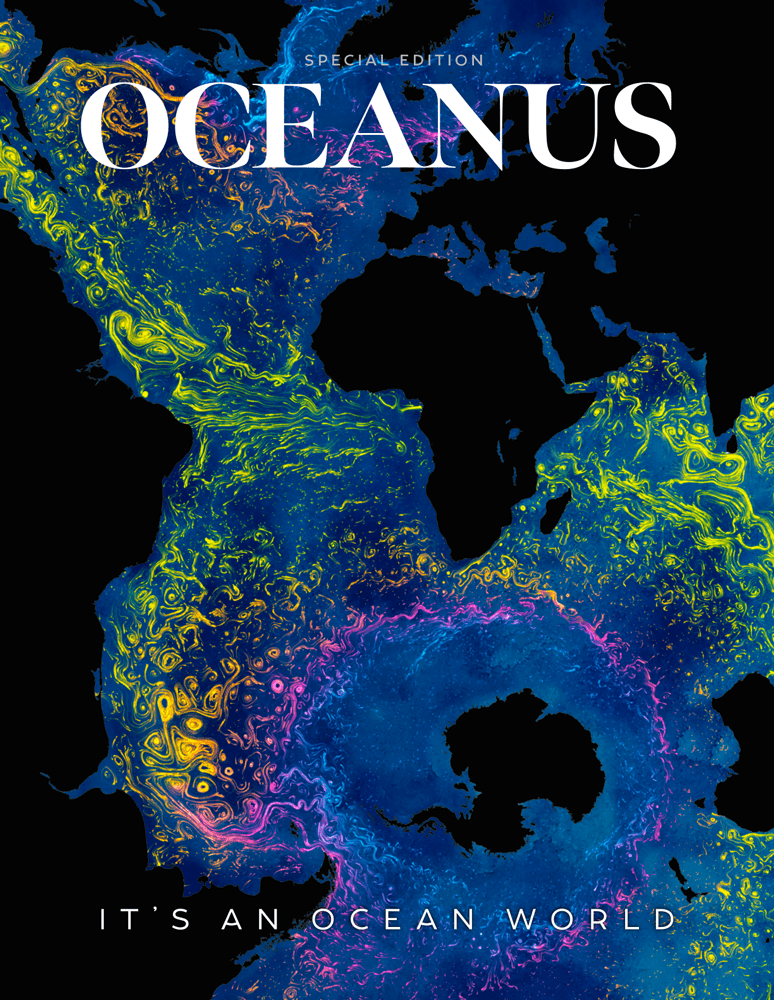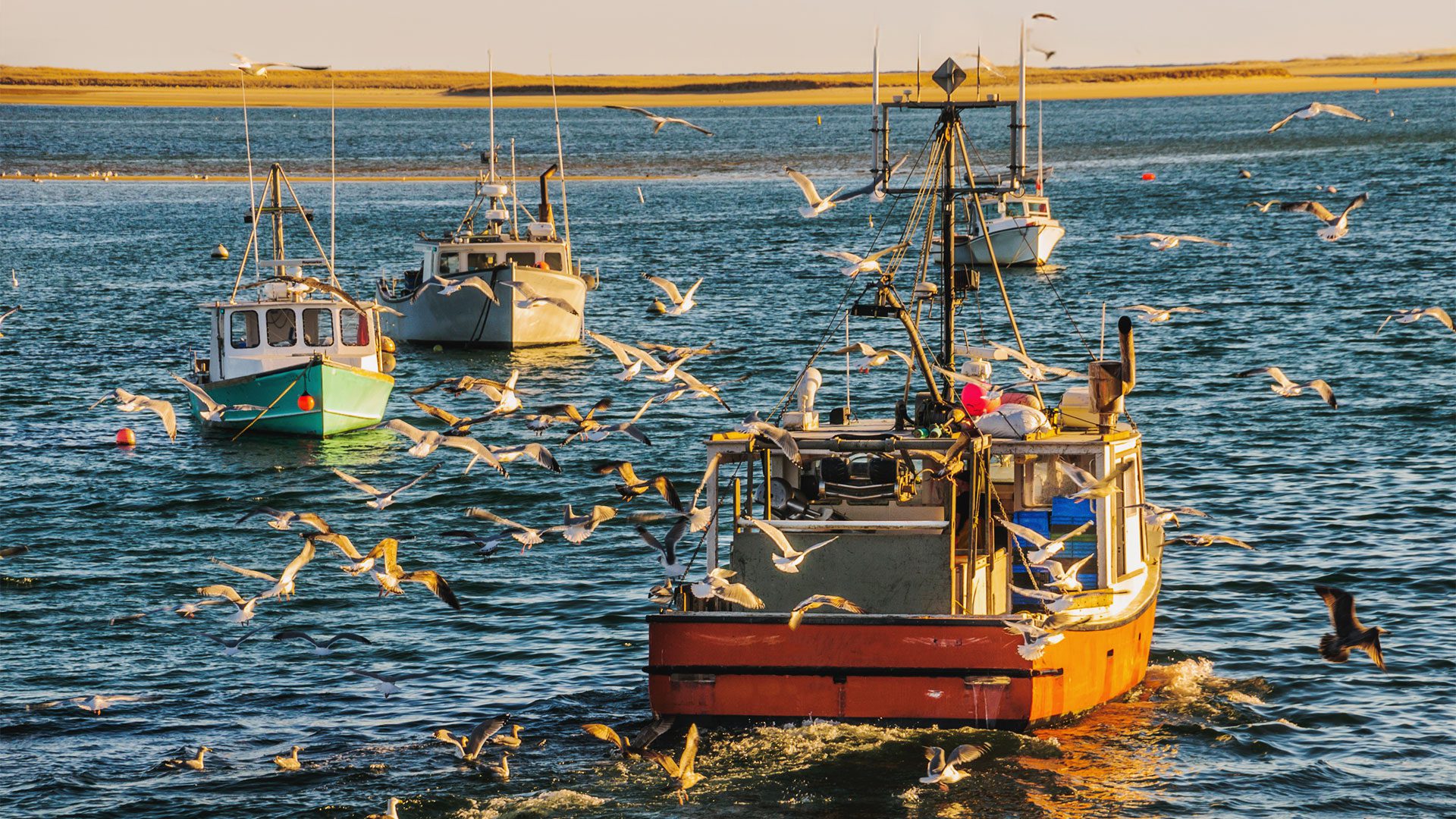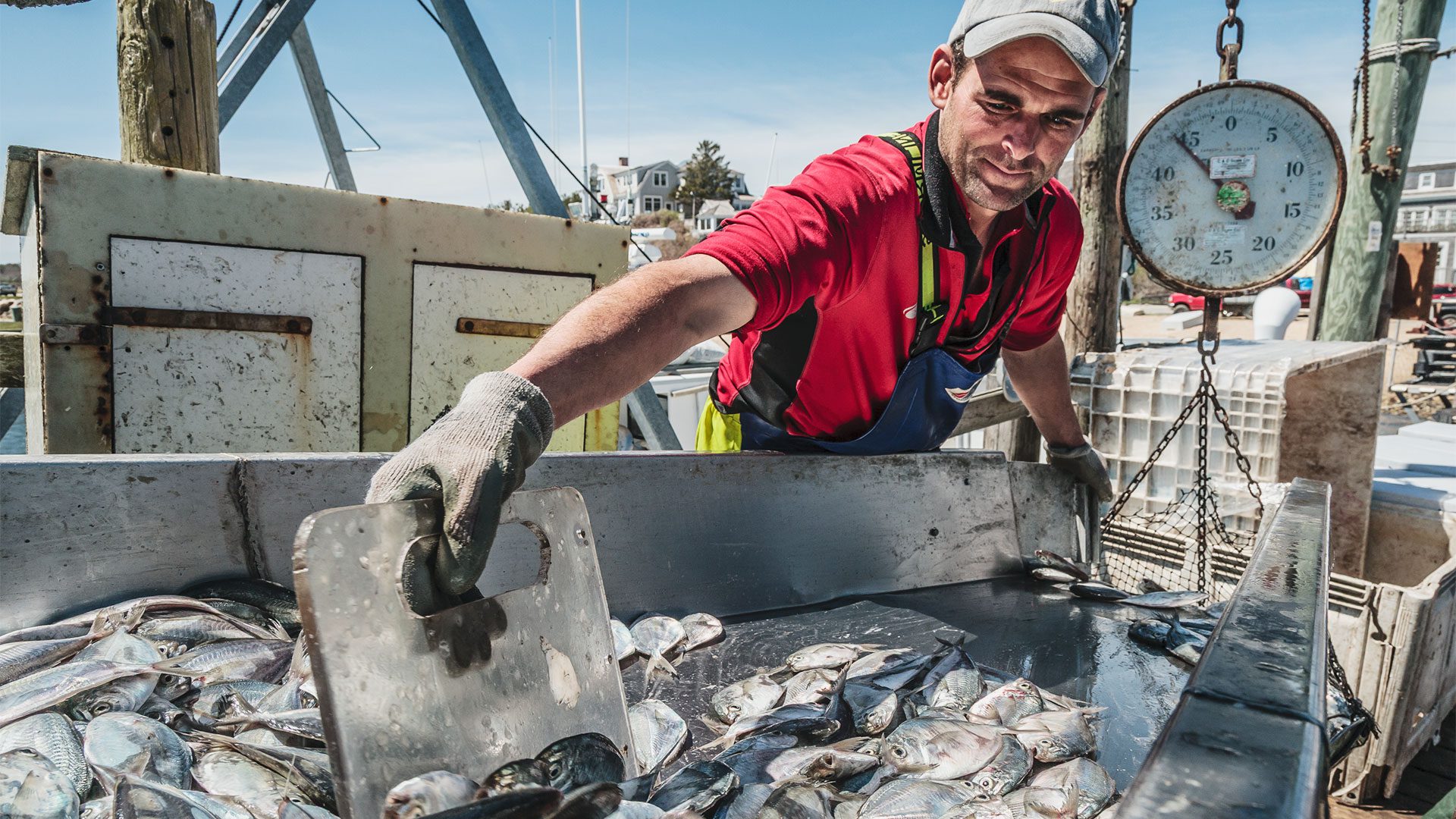
Hooked on change
Charting a new course for fisheries in a warming world
Estimated reading time: 4 minutes
 This article printed in Oceanus Winter 2025 - SPECIAL ISSUE
This article printed in Oceanus Winter 2025 - SPECIAL ISSUE
Atlantic cod was once the boon of the New England economy. In 1602, the fish was so abundant that it inspired English explorer Bartholomew Gosnold to dub Massachusetts’ iconic peninsula “Cape Cod.” More than 400 years later, codfish has become emblematic of the challenges facing commercial fishers in the region.
“I never wanted to give up my chance to go cod fishing,” says 56-year-old fisherman Kurt Martin, captain of the F/V Time Bandit in Chatham, Massachusetts. “I really thought the fish were coming back, but it’s finally coming to light that I’ll never get to go cod fishing again.”
Cod is one of 13 commercially valuable species that have seen a dramatic decline across New England in the last century. Between 1990 and 2023, New England’s cod industry alone lost 97% of its value, about $71.5 million in annual revenue.
This deficit is partly due to years of overfishing but is also a response to rapid temperature swings spurred on by a warming planet. Over the last century, temperatures in the Gulf of Maine have risen faster than 99% of the global ocean, pushing most groundfish fisheries north by an average of 50 miles (80 kilometers) as many species search for cooler waters.
In 2025, WHOI launched the Fishery Futures Alliance to help fishers like Martin adapt to these changes by leveraging the latest technologies, real-time data, and climate models at the institution. Their aim: to reimagine fisheries management in a more dynamic ocean.
“This has been a long time coming,” says WHOI scientist Camrin Braun, lead investigator on the project. “Now, there are all these tools that we scientists have at our disposal to help us understand the ocean that could absolutely be used to put information in the hands of people who really need it.”
Braun co-leads six scientists and collaborators on the research team, with expertise ranging from fish ecology to marine predator tagging, satellite observations, and ocean modeling. Together with regulators and fishers, they can provide vital context that could make aspects of management, such as permits and fishing quotas, more responsive to real-time oceanographic changes.
Fisheries management hasn’t fundamentally changed in the last century. Today’s regulations are still informed by stock assessments carried out by NOAA Fisheries once every three to five years. These assessments are often accomplished through acoustic surveys and sample trawls (among other methods), which help generate complex models to predict the abundance of fishery species.
The surveys aren’t without their blind spots. Stock assessments are conducted within areas where fish were present the previous year. This can make it easy to overlook the latest environmental conditions impacting fish migration. They also don’t account for fishing opportunities presented by new species, such as the black sea bass, which have migrated north from the Carolinas to areas around Cape Cod in recent decades.
“For so long, the policy was focused on reducing fishing pressure,” says John Pappalardo, CEO of the Cape Cod Commercial Fishermen’s Alliance. “But [fisheries managers] didn’t really give weight to the environment that those species are living in.”
Essential to the project’s success will be partnering with fishers and community liaisons like Pappalardo. In May 2025, the WHOI team met with him to brainstorm ways that scientific information could benefit the fishing community. This included discussion of simulated models that show where the phytoplankton that fish eat may be distributed, as well as knowledge of discrete, weather-like events in the ocean, such as warm water intrusions produced by the Gulf Stream, which can influence the movements of groundfish.
“We’re taking this list of the latest and greatest science ingredients to the industry and saying, ‘hey, let’s come up with some recipes together,’” says Braun.
One goal of the project is to help fishers become more “surgical” in how they find commercially valuable species. This could reduce time spent on the water, increase profitability and efficiency, and improve protection of non-target animals from bycatch.
“If we leverage these tools in the right way, we can enable much more precise fishing,” says Braun. “We can, for example, forecast where important fishery species will be next month or even next season.”
The trick, he adds, will be to determine what real-time data will be most helpful to the fishing community to create win-win scenarios for both fishers and the environment.
“We’re not data poor in designing or answering key questions relating to sustainable fisheries,” says Pappalardo. “I think where we need to focus is using that data differently to build a fishery management process that’s more responsive and sustainable.”
Today, many vessels are feeling the squeeze of increasing economic pressure. Rising gas prices, equipment maintenance, and the cost of crew mean most fishers are barely breaking even. To stay profitable, fishers like Martin say they need to hold multiple fishing permits to keep the options open for what they can catch. That’s not cheap. Permit costs for scallops, for example, can be well over $1 million.
“You have to be diversified,” says Martin. “Go after what’s available, not what you think should be there.”
For all this change, Martin remains hopeful that the industry can adapt to an increasingly dynamic ocean, as long as it has the right science to do so.
“I chose to go into fishing; I wasn’t born into it,” says Martin. “I’m hopeful the industry can change, but the science has got to catch up with fisheries regulation first.”
Funding for the Fishery Futures Alliance is provided through the Grossman Catalyst Fund. This competitive seed-funding program advances high-risk, high-reward science and technology and provides critical support for researchers at all career stages as they search for solutions to some of the most pressing challenges facing our ocean and society.

